This Saturday, Australia’s oldest floral festival culminates during a street procession down Main Street. Grafton’s Jacaranda festival has been uplifting community spirits since 1934. You’ll see 60 floats, and a crowned Jacaranda Queen and Princess, while a flotilla of purple descends upon the city’s streets, parks and gardens.
From Grafton to Goulburn, a haze of mauve spreads. Streets are painted purple with fallen blossoms; slippery carpets are rolled out for children to frolic in, as we celebrate the arrival of summer. It coincides with cacophony of cicadas, end-of-year-exams and a Ross Family a rush of birthdays!
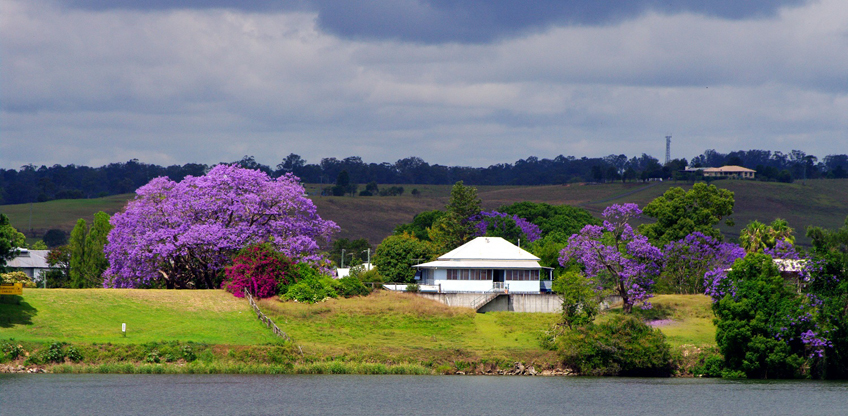
A very common scene on the Clarence River at this time of year. Photo - Tess Ross
Many think Jacaranda are so widespread they have to be a native to Australia. But they’re native to Brazil, and have been widely planted throughout the
subtropical and warm temperate zones of the world such as Mexico, Los Angeles, Lisbon, Seville, Cuba, Jamaica and Australia.
Although Grafton is the epicentre of the Jacaranda appreciation in Australia, many towns and villages have Jacaranda-lined streets. Search out stunning
examples in Sydney's north shore and harbour suburbs such as Kurraba Road, Kirribilli; The Rocks and Paddington and tops suburban examples in Hogben Park and Frys Reserve, Kogarah and Lane Cove. Victoria’s Red Cliffs, part of the Calder Highway, was named Jacaranda Street in the original town plans of the early 1920s when Jacaranda trees were planted along this street. Look out in Ipswich in South East Queensland, particularly along the Bremer River, for outstanding Jack viewing opportunities. In Brisbane the trees are most notable
in a long curved avenue in New Farm Park in Goodna, while the Perth suburb of Applecross has its own tree-lined vistas.
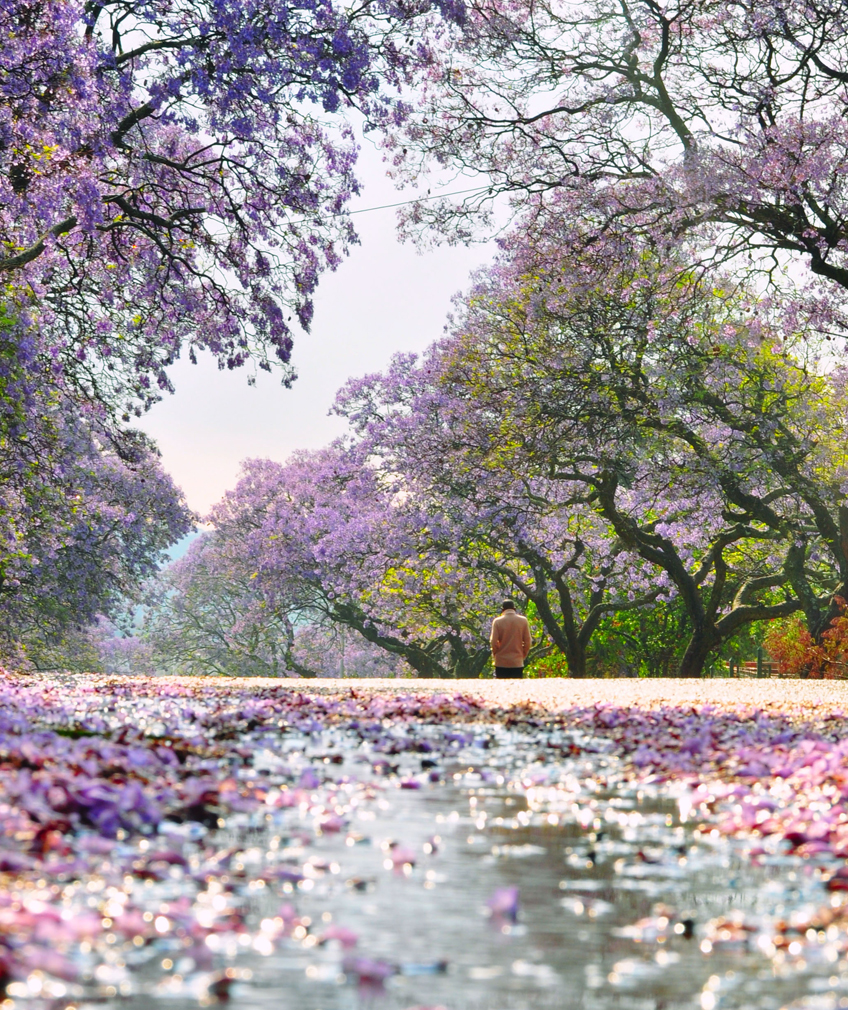
Beautiful Jacaranda-lined streets are a common feature in eastern Australian towns in November. Photo -Orangecrush / Shutterstock.com
Jacaranda (Jacaranda mimosifolia) is a genus of 49 species of flowering plants in the family Bignoniaceae which also includes plants with tubular
flowers like the African tulip tree(Spathodea campanulata), trumpet creeper (Campsis radicans), trumpet tree (Tabebuia)
and Cape honeysuckle (Tecoma capensis).
Growing Tips
Jacarandas are particularly beautiful from the harbour during our annual Jacaranda Cruises, and we touch on why so many of these trees were planted in
Sydney (it had something to do with certain maternity nurses giving them away with every child born in the Sutherland and Ryde hospitals!)
But just one tree can make a huge impact. When planted in the middle of a lawn, stretching their boughs to 10m, they became a good shade tree perfect for
climbing and their fallen flowers are a constant enjoyment to children who love to play in that four-week-purple-carpet-window.
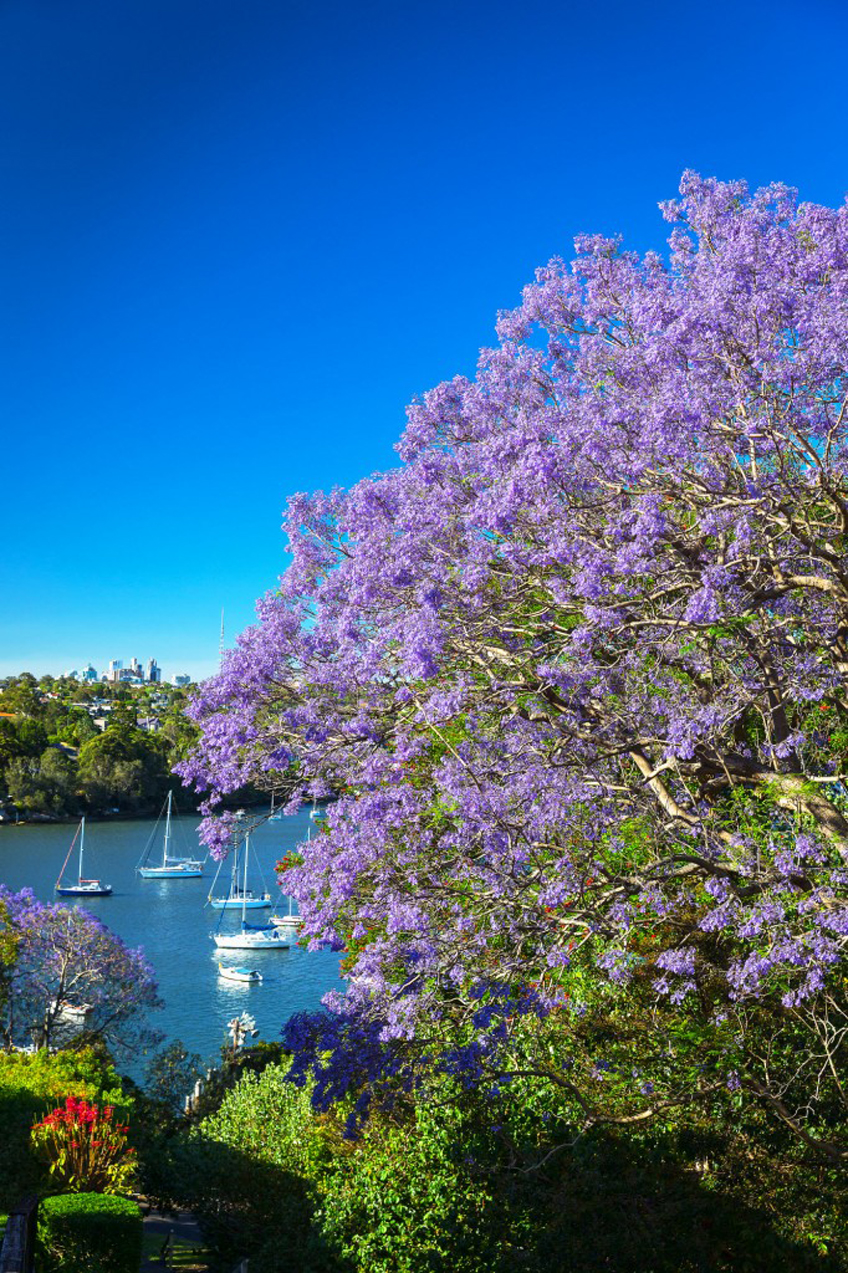
Jacarandas are particularly beautiful from the water. Photo - Hamilton Lund
The most important thing when considering a Jacaranda for your own garden is that seedling variation exists. We’d all prefer a deep purple coloured jacaranda
rather that a wishy-washy lilac one – so we recommend a modern grafted form from a nursery which will be quicker to grow and flower than a chance seedling
which can have variable colour and take an age (up to 7 years) to flower! We also like the smaller growing white Jacaranda called ‘White Christmas’
which we are propagating for Garden Clinic friends at the moment.
Don’t plant one near a pool, or too close to the house, and never ever prune a single branch or it’ll shoot up what we call epicormic growth that heads
straight up in to the air and ruins its pretty umbrella shape. And never plant them under power lines. You’ll often see tortured Jacarandas that have
been given a thoughtless power-provider-hack-back!
Do start out with a sunny spot, well-drained soil, added nutrient and plenty of extra watering. Stake the trunk and mulch the soil. A grafted specimen
will flower in its first year.
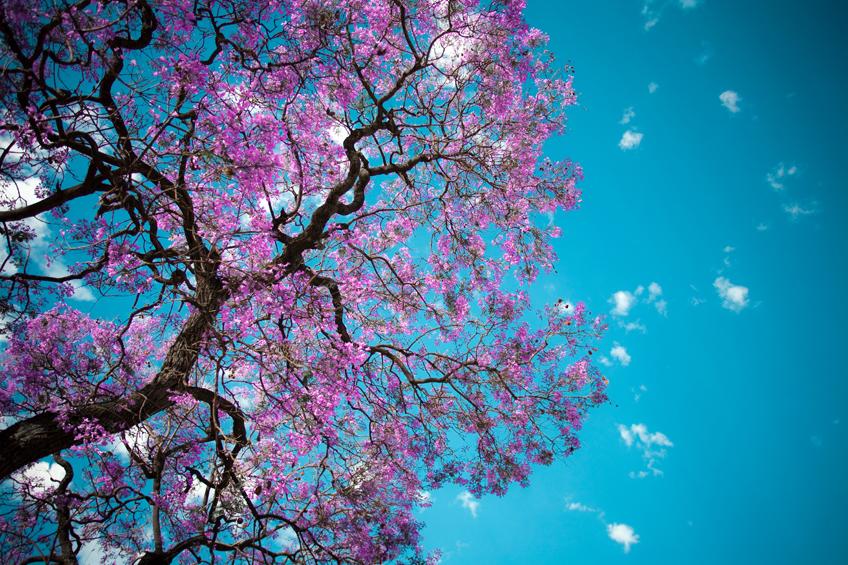
Photo - Elena Kalistratova / Shutterstock.com
We just love it when the seasons and rain coincides, planets align, for our Melbourne Cup Trifecta. No money exchanges for this trifecta - three brightly
coloured subtropical flowering trees – flowering in unison. The purple Jacaranda and its two audacious Australian companions – the golden Silky Oak
(Grevillea robusta) and the red Flame tree (Brachychiton acerifolia) make such a bold splash across Sydney. Nothing gives me a shiver of excitement
about the beginning of summer than to catch an incidental vista of these three trees in the suburbs of Sydney.
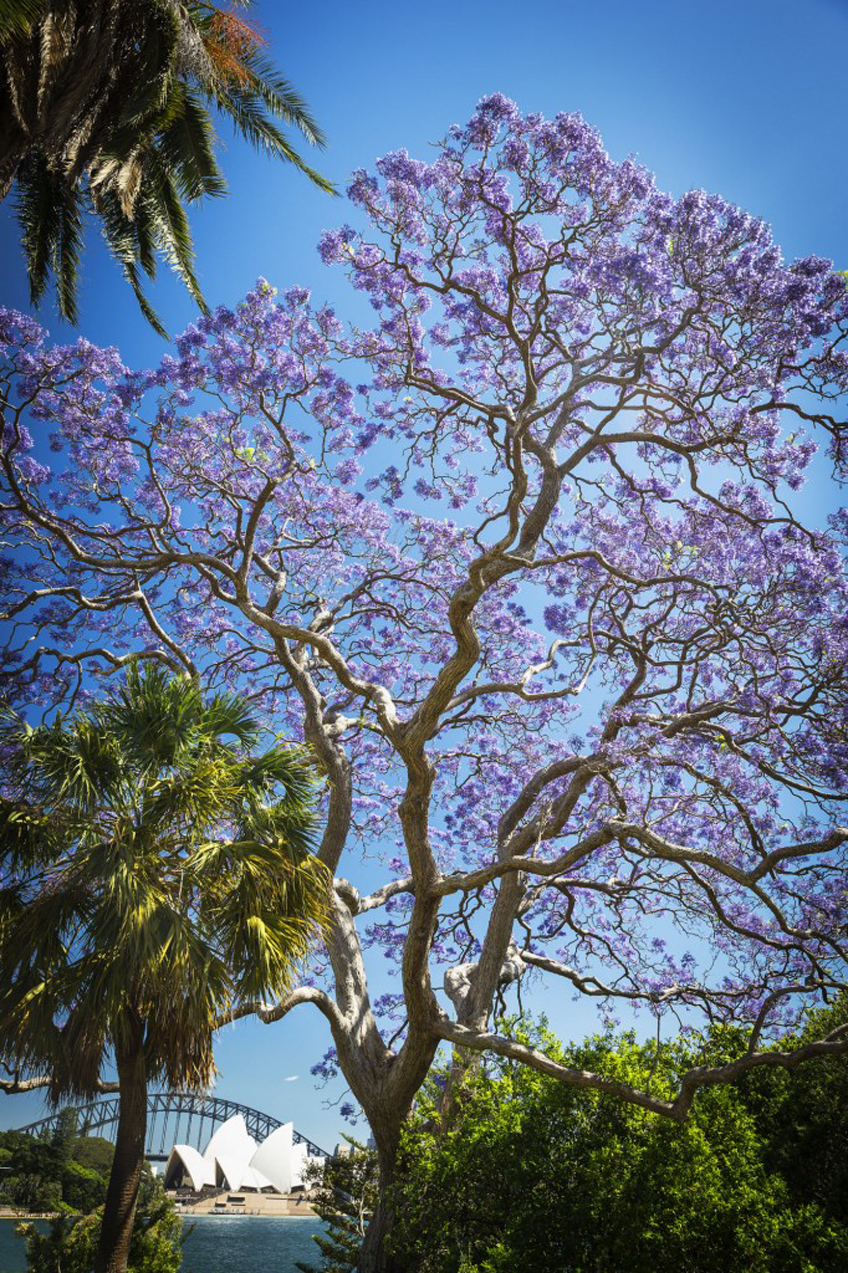
A great partnership. Sydney Harbour and the Jacaranda. Photo - Hamilton Lund